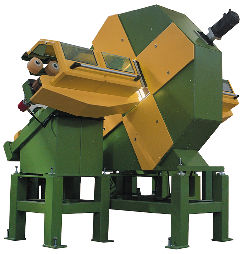Choosing a camera for a production line inspection system
Over the years we have worked with several customers to make inspection systems. Their requirements are always different from what we have done before, so we must work with them to properly understand their needs.

One customer needed to inspect lengths of wood. The pieces were not all the same length, but were all much longer than their other dimensions. This lead to the choice of Linescan cameras. This scans a line of the object, and as it moves along the production line, more lines are scanned. These lines are then used to form a long image with as many lines as you need.
It was necessary to inspect all four faces of the sawn wood, so they designed a cabin to mount four cameras around a gap in the line. We designed electronics to synchronise the scanning of all four cameras, so that each scan represented a fixed distance regardless of the speed of the piece of wood. They mounted lighting in the cabin to provide a consistent image, and using our processor boards were able to detect faults in the wood and control other machinery in the sawmill to remove the faulty parts and use as much of the timber as possible.

Another customer were experts in lighting glass objects in ways that highlights the faults. Using this lighting, air bubbles trapped during the manufacture, or cracks introduced in handling the glass object can be made to reflect the light - resulting in a bright part of the image.
This application was better suited to areascan cameras that can be triggered by the object reaching the correct location on the production line. The resulting single image for each object, has the object in the same location. We provided Electronics that would capture the image into the memory of a processor, that could then search the critical areas of the image for bright objects and run some checks to see if it is a fault with the item or not. The processor can then trigger a mechanism to reject the item from the production line.
Other applications need to compare colours or shapes of objects - even Infra Red (IR) cameras could be used.